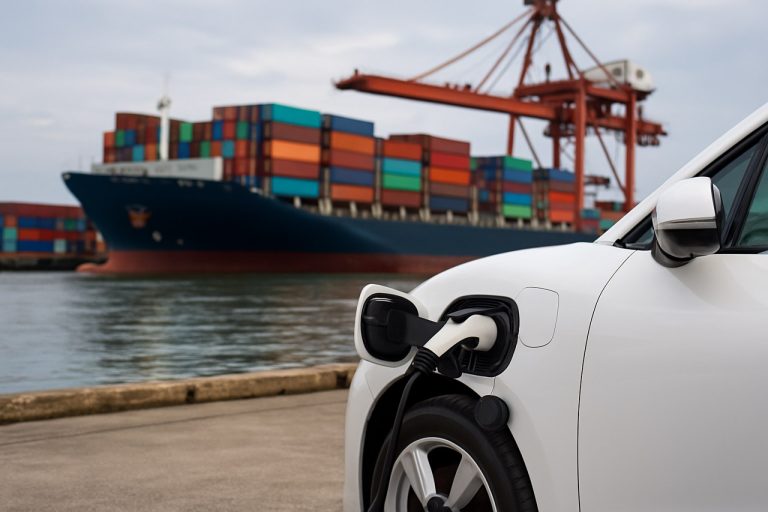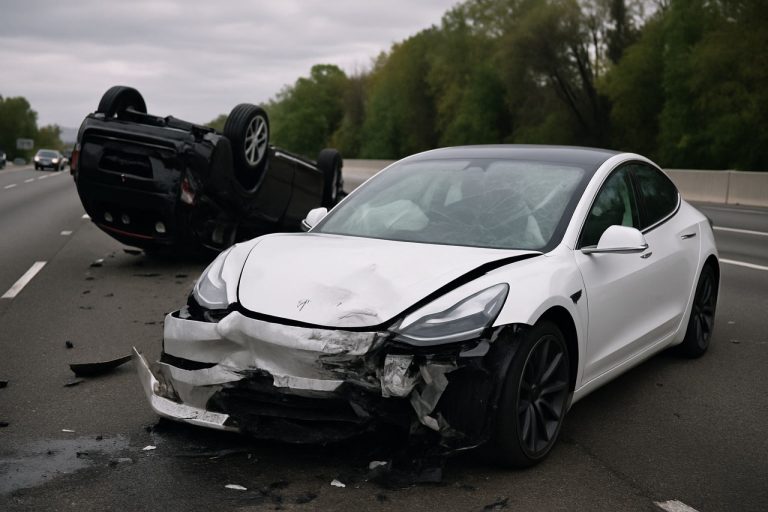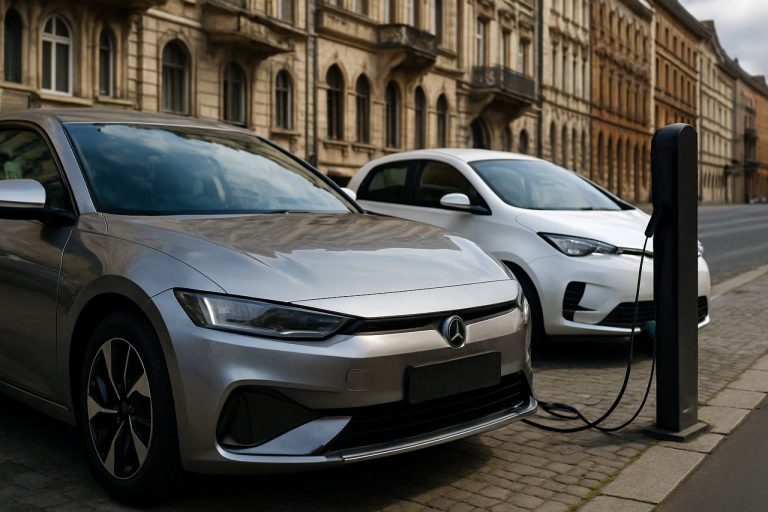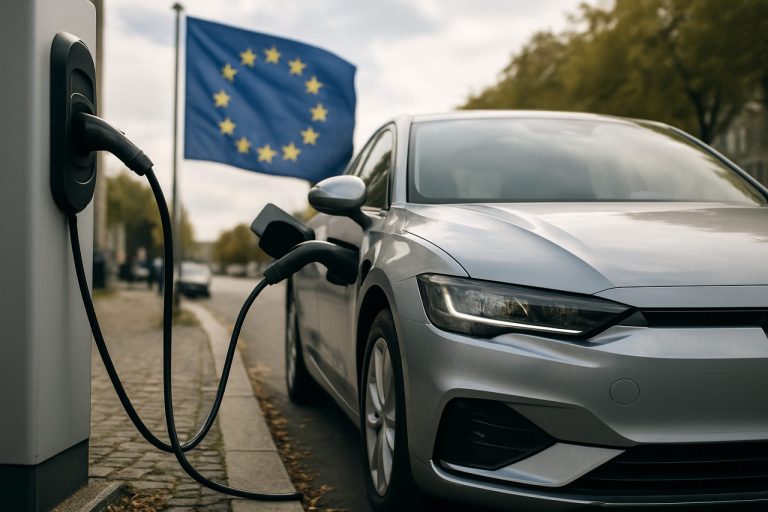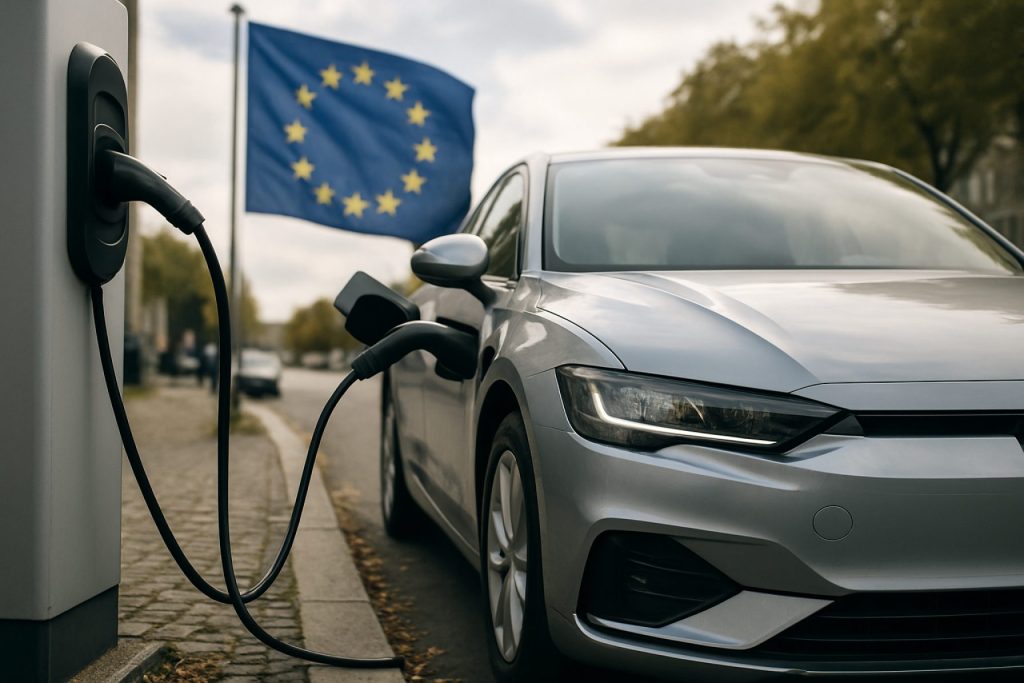
- China’s BYD surpassed Tesla in pure electric vehicle sales across Europe, signaling a major shift in the EV market.
- BYD saw a 169% year-over-year sales surge in April, far outpacing overall European EV growth and competitors from the US, Europe, and Japan.
- Success is fueled by aggressive expansion, government support, local assembly, and strategic partnerships that bypass tariff barriers.
- Many BYD imports are delivered to rental and corporate fleets, building brand awareness but not always direct consumer demand.
- Tesla’s European registrations have dropped sharply, amid reduced US subsidies and reputational challenges.
- The EU is responding with steep new tariffs on Chinese EVs, intensifying market tension and igniting a broader East-West trade rivalry.
- Europe’s EV battle highlights deeper issues in climate policy, trade, and global competition—signaling rapid, unpredictable change ahead.
Electric dreams once revolved around Silicon Valley. This spring, the heart of the movement beat unexpectedly out of China. Under slate-gray skies, showroom lots in Paris, Berlin, and Budapest quietly filled with sleek newcomers. For the first time in history, China’s BYD—little-known to many a year ago—outsold Tesla in pure electric cars across Europe.
The numbers, though close, ring out a seismic message. BYD logged 7,231 battery-electric vehicle registrations—edging past Tesla’s 7,165. Don’t let the narrow margin fool you. This moment marks a decisive crack in the old order of global carmaking.
Across Europe, BYD achieved a spectacular 169% year-over-year sales surge for April, all while regional EV growth clocked a potent 28%. Chinese electric brands collectively grew nearly twice as fast as their American, European, or Japanese peers, cementing their status as formidable disruptors.
How was this possible? BYD’s advance is no accident; it’s the outcome of a chess game in economics and geopolitics. While Western automakers clung to traditional strongholds, BYD set up shop in Hungary and other Eastern European states, dynamically forging local partnerships and sidestepping the scrutiny and tariffs that EU heavyweights had hoped would block Chinese cars. These ventures offered Hungary and Serbia an infusion of Chinese capital, a much-coveted tonic for post-pandemic recovery—contrasting sharply with the wary stares from the car titans of France and Germany.
But the strategy runs deeper. Substantial backing from the Chinese government enables BYD to undercut rivals, sometimes even at the expense of profits. European buyers, drawn to lower sticker prices and the promise of sustainable transport, have so far ignored the environmental trade-off: much of the pollution and recycling burden is carried in China, while Europeans savor the green glow.
Tesla, for all its pioneering zeal, has stumbled. The U.S. firm’s European registrations for April plummeted by nearly half. Analysts point to several reasons: waning institutional support in the U.S. as subsidies shift toward legacy carmakers, and an ever-cooler European attitude toward Tesla’s flamboyant CEO. In the court of European opinion, the brand’s charisma may have shifted from innovation to controversy.
The battle isn’t simply a tale of two companies. It is the frontline in the contest of East versus West. The EU, facing a surge of inexpensive electric imports, announced punitive tariffs climbing as high as 35% on Chinese EVs, seeking to blunt what they allege is a flood of subsidized cars. Europe recognizes China as both a trading partner and a systemic rival. With new factories and deep pockets, BYD moves at an agile pace, even as talks with the EU drag on regarding minimum price floors for imports.
Critically, many BYD vehicles counted as “European sales” are assembled locally and often delivered to rental fleets or company buyers—not always representing direct consumer adoption. The company inked a deal with rental giant Ayvens last year, signaling a tactical effort to build brand presence on business roads from Lisbon to Warsaw.
Will this surge last? Experts urge caution. April’s shake-up is electric, but the market remains volatile. Brands like Ford and Skoda, together with rising Chinese challenger Xpeng, are hot in pursuit. True market dominance demands more than one victorious month.
The broader context is clear: This contest for Europe’s highways is also a contest of principles—over climate policy, trade rules, and how open societies respond to the advance of new powers. As the West’s posture toward China hardens, the resilience of BYD’s success will be tested by tariffs, regulation, and the fickle moods of millions of European drivers.
Electric cars symbolize the future, but their journey will follow no simple road. Europe’s embrace of a Chinese champion signals a new, more unpredictable era for the world’s roads—and possibly a reckoning on how nations trade, compete, and drive toward tomorrow.
Key takeaway: The race for Europe’s electric car crown is more than a sales contest. It’s a turning point revealing how market forces, government strategy, and global politics are reshaping the cars we drive and the world we navigate. The only certainty? Change, and plenty of it, lies ahead.
Why BYD’s European Electric Car Surge Signals an Industry Earthquake: What Buyers Need to Know Next
The Fast-Changing Face of Europe’s Electric Car Market
China’s BYD has now overtaken Tesla in pure electric car (EV) sales across Europe—a milestone that reveals much more than a numbers game. This is a transformation powered by technological innovation, geopolitics, and shifting consumer values. Below, we dive far deeper into the forces at play, emerging trends, challenges, and essential takeaways for car buyers, investors, and policymakers.
—
What Is BYD, and Why Are They Dominating?
Company Overview & Technology
– BYD (Build Your Dreams) is a Chinese conglomerate that began as a battery manufacturer and entered the auto market in 2003.
– Unlike many rivals, BYD controls its battery supply chain, producing innovative Blade Battery technology, known for higher energy density and improved safety (source: BYD).
– BYD’s focus on vertical integration enables cost cuts, agility, and faster technology innovation.
– It invested early in battery-electric vehicles (BEV), plug-in hybrids (PHEV), and energy storage, giving it a competitive edge in production scale.
Key Models & Pricing
– Models like the BYD Atto 3, Seal, Dolphin, and Han target different market segments—making BYD a “car for everyone” brand.
– The BYD Dolphin starts at approx. €29,990 in Europe (2024 prices), undercutting many competitors.
– BYD’s EVs often boast more standard features at lower prices compared to competitors (for example: heated seats, advanced safety tech, and large infotainment screens).
Strategic Partnerships
– BYD’s deal with Ayvens (one of Europe’s largest fleet/rental operators) drastically increased visibility in multiple countries.
– Assembly partnerships and local facilities in Hungary and other states help BYD sidestep import tariffs and appear more “local” to European consumers.
What Makes China’s Approach Different?
Government Support & Subsidies
– Generous Chinese government subsidies and policies have accelerated EV manufacturing, allowing BYD and others to undercut global rivals.
– State-backed infrastructure (massive R&D, gigafactories, and supply chains) empowers rapid scaling.
– However, such support is a core point of contention in EU trade talks—prompting recent tariffs as high as 35% on Chinese EVs.
Rapid European Expansion
– Chinese automakers, including NIO, Xpeng, Geely (owner of Volvo and Polestar), and MG (through SAIC), nearly doubled their market share in European electric vehicle sales between 2022-2024.
– BYD is leading this charge—already operating or building facilities in Hungary, and exploring opportunities in Germany, France, and Spain.
How Do BYD Cars Compare? (Reviews & Comparisons)
Pros
– Value: More standard tech, range, and safety features for the price.
– Efficiency: Blade battery offers longer life and can tolerate harsh temperature swings.
– Range: Many models exceed 400km (250+ miles) on a single charge (WLTP cycle).
– Warranty: BYD commonly offers 8-year/160,000km battery warranties.
Cons
– Brand Awareness: Still a newcomer to many Western consumers; perceived as less prestigious than local or established brands.
– Service Network: Dealers and repair shops for BYD cars are less widespread than for Tesla or VW.
– Software: Some reviewers cite less-polished infotainment vs. Tesla or legacy EU brands.
– Resale Values: Unknown in EU for Chinese brands—not yet tested over a full ownership cycle.
Key Industry Trends & Market Forecasts
– European EV adoption accelerated by 28% year over year (April 2024, ACEA).
– Analysts (IEA, BloombergNEF) predict Chinese brands could command up to 15% of Europe’s EV market by 2027 if tariffs don’t intensify.
– Legacy automakers (VW, Stellantis, Renault, Mercedes) are responding by accelerating affordable EV launches, increasing R&D, and lobbying for EV-friendly incentives.
Controversies, Limitations, and Geopolitical Risks
– Trade Tensions: The EU accuses China of “market dumping”—selling EVs below cost thanks to state support—potentially hurting local manufacturers.
– Tariffs: New import duties may force BYD and peers to raise prices or localize production; risk of a price war or trade escalation remains high.
– Sustainability: Much of EV battery production’s environmental burden is offshored to China, where regulatory standards may differ—raising ethical questions.
– Security: Some EU officials are concerned about cybersecurity standards and data privacy in connected Chinese autos.
Real-World Use Cases
– Urban Mobility: BYD’s Atto 3 and Dolphin are popular among city dwellers and rideshare drivers thanks to efficiency and size.
– Fleet Transition: Rental and corporate fleets across Europe are integrating BYD models for their reliability and lower total cost of ownership.
– Rising Second-Hand Market: Early fleet sales will soon create a used BYD market, offering budget-conscious entry to EVs—watch for 2025 deals.
How-To Steps: Shopping for a BYD in Europe
1. Research Models: Compare the BYD Atto 3, Dolphin, Seal, and Han to see which fits your needs.
2. Check Local Incentives: Many nations offer rebates or tax breaks for new EVs—potentially saving thousands.
3. Consider Charging: Ensure your home, work, or neighborhood supports EV charging (BYD offers home chargers in many markets).
4. Test Drive: Experience the technology and build quality firsthand; BYD has been opening new showrooms rapidly.
5. Evaluate Dealer Support: Ask about local servicing, warranties, and parts availability.
6. Monitor Tariffs: Upcoming changes in EU import policy may affect pricing and model availability.
—
The Most Pressing Reader Questions—Answered
Q: Will Chinese EVs stay cheaper than European or American models?
– A: For now, yes. BYD’s advantage comes from home-grown batteries, massive R&D, and government support. But if EU tariffs persist or rise, prices could edge closer to European competitors.
Q: Are Chinese EVs as safe as European models?
– A: BYD achieves strong safety ratings (Euro NCAP 5-star for Atto 3). However, always check each model’s independent crash test results for peace of mind.
Q: Do BYD cars support European charging networks?
– A: Yes, BYD models are compatible with European fast-charging infrastructure (CCS2 standard). Some models support vehicle-to-load (V2L) functions.
Q: What about software updates and data security?
– A: BYD cars do support over-the-air updates, but privacy and data localization remain under HEAVY scrutiny by European regulators.
—
Expert Insights, Predictions, and Quick Tips
– BYD’s future in Europe hinges more on EU policy than technology. Watch tariff news for real-time impact on models/pricing.
– Resale values and servicing support will determine if BYD can become a household name—do your local due diligence.
– If considering a BYD lease or fleet option, negotiate on large available stock—fleet buyers often secure discounts not advertised to consumers.
– Expect more automakers to prioritize affordable, long-range models by 2025, increasing competition and consumer choice.
– Keep abreast of developments at BYD and major automotive news outlets for the latest product launches and market responses.
—
Actionable Recommendations & Life Hacks
– For Buyers: Try before you buy! Take extended test drives; compare insurance costs and available incentives.
– For Investors: Track European EV market share data quarterly for early signals on which brands are breaking through.
– For Fleet Managers: Early-adopting BYD may give you cost and PR advantages over rivals—especially when paired with in-house charging solutions.
– For Policy Watchers: Monitor the pace of EU-China negotiations; the next 12-18 months will shape Europe’s EV roadmap for years.
– Want sustainability assurance? Ask dealers about battery sourcing and recycling plans—BYD is piloting circular battery programs, but details vary by country.
—
Bottom Line:
Europe’s embrace of BYD is just the beginning. Both market forces and public policy will reshape the EV landscape in the months ahead. Stay agile, informed, and ready for what the next turn brings.
Related links:
BYD
Tesla
European Automobile Manufacturers’ Association (ACEA)
